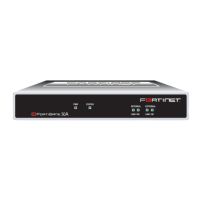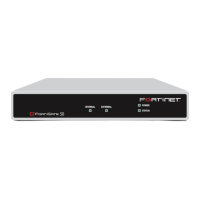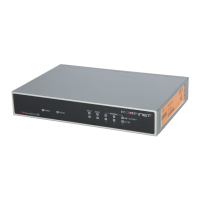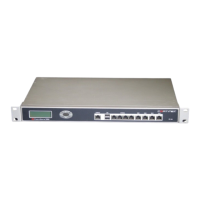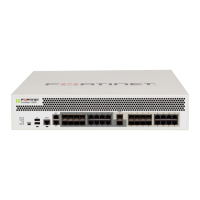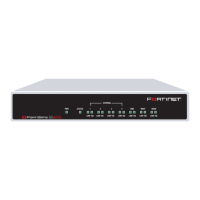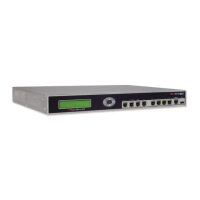FortiGate Version 3.0 MR4 Administration Guide
190 01-30004-0203-20070102
RIP Router Dynamic
How RIP works
When RIP is enabled, the FortiGate unit broadcasts requests for RIP updates
from each of its RIP-enabled interfaces. Neighboring routers respond with
information from their routing tables. The FortiGate unit adds routes from
neighbors to its own routing table only if those routes are not already recorded in
the routing table. When a route already exists in the routing table, the FortiGate
unit compares the advertised route to the recorded route and chooses the shortest
route for the routing table.
RIP uses hop count as the metric for choosing the best route. A hop count of 1
represents a network that is connected directly to the FortiGate unit, while a hop
count of 16 represents a network that the FortiGate unit cannot reach. Each
network that a packet travels through to reach its destination usually counts as
one hop. When the FortiGate unit compares two routes to the same destination,
the route having the lowest hop count is added to the routing table.
Similarly, when RIP is enabled on an interface, the FortiGate unit sends RIP
responses to neighboring routers on a regular basis. The updates provide
information about the routes in the FortiGate routing table, subject to the rules that
you specify for advertising those routes. You can specify how often the FortiGate
unit sends updates, how long a route can be kept in the FortiGate routing table
without being updated, and for routes that are not updated regularly, how long the
FortiGate unit advertises the route as unreachable before it is removed from the
FortiGate routing table.
Viewing and editing basic RIP settings
When you configure RIP settings, you have to specify the networks that are
running RIP and specify any additional settings needed to adjust RIP operation on
the FortiGate interfaces that are connected to the RIP-enabled network.
To configure basic settings for a FortiGate unit connected to a RIP network, go to
Router > Dynamic > RIP. To edit the operating parameters of a RIP-enabled
interface, go to Router > Dynamic > RIP and select the Edit icon in the row that
corresponds to the RIP-enabled interface.
Figure 105 shows the basic RIP settings on a FortiGate unit that has interfaces
named “dmz” and “external”. The names of the interfaces on your FortiGate unit
may be different.
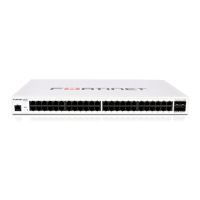
